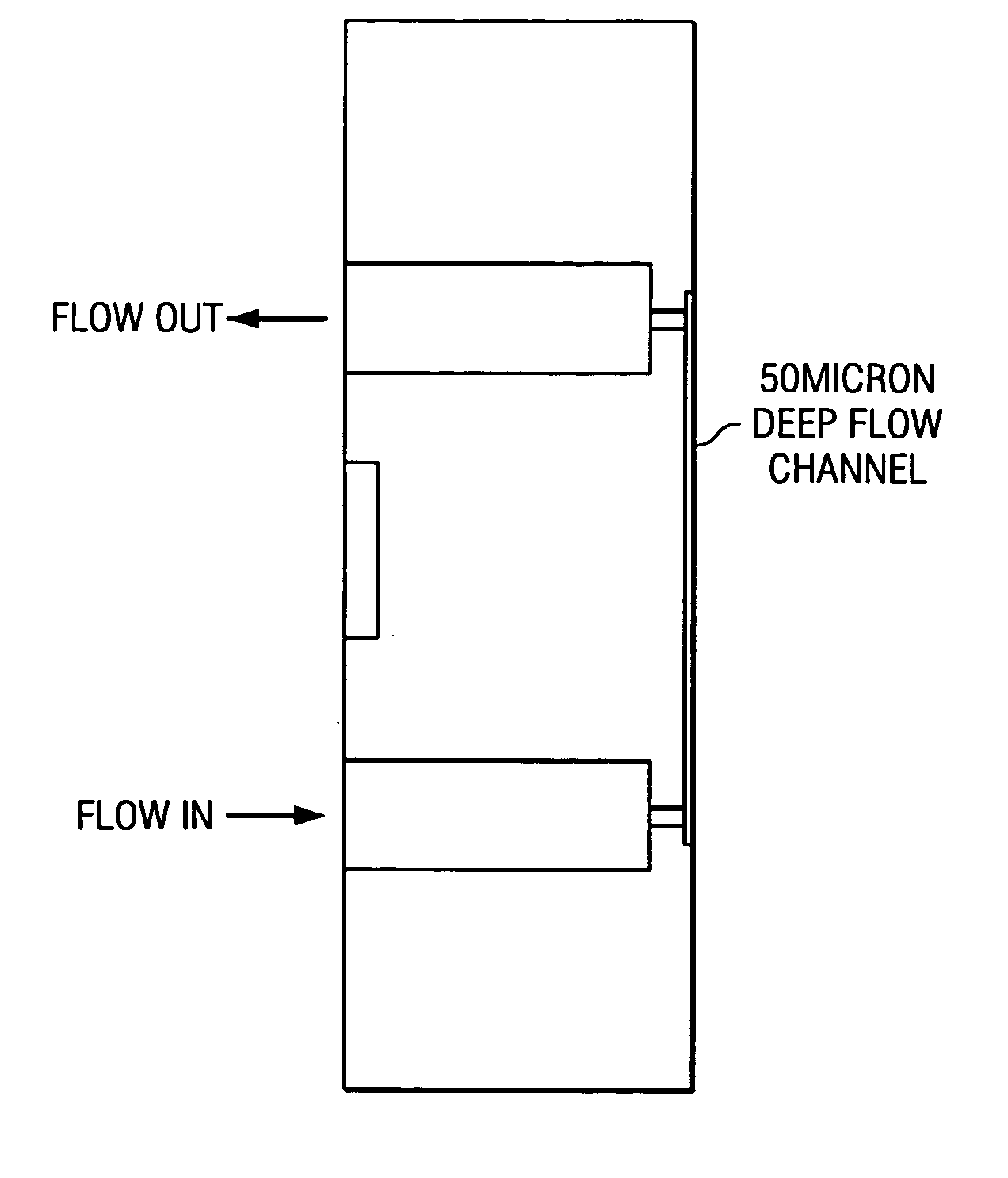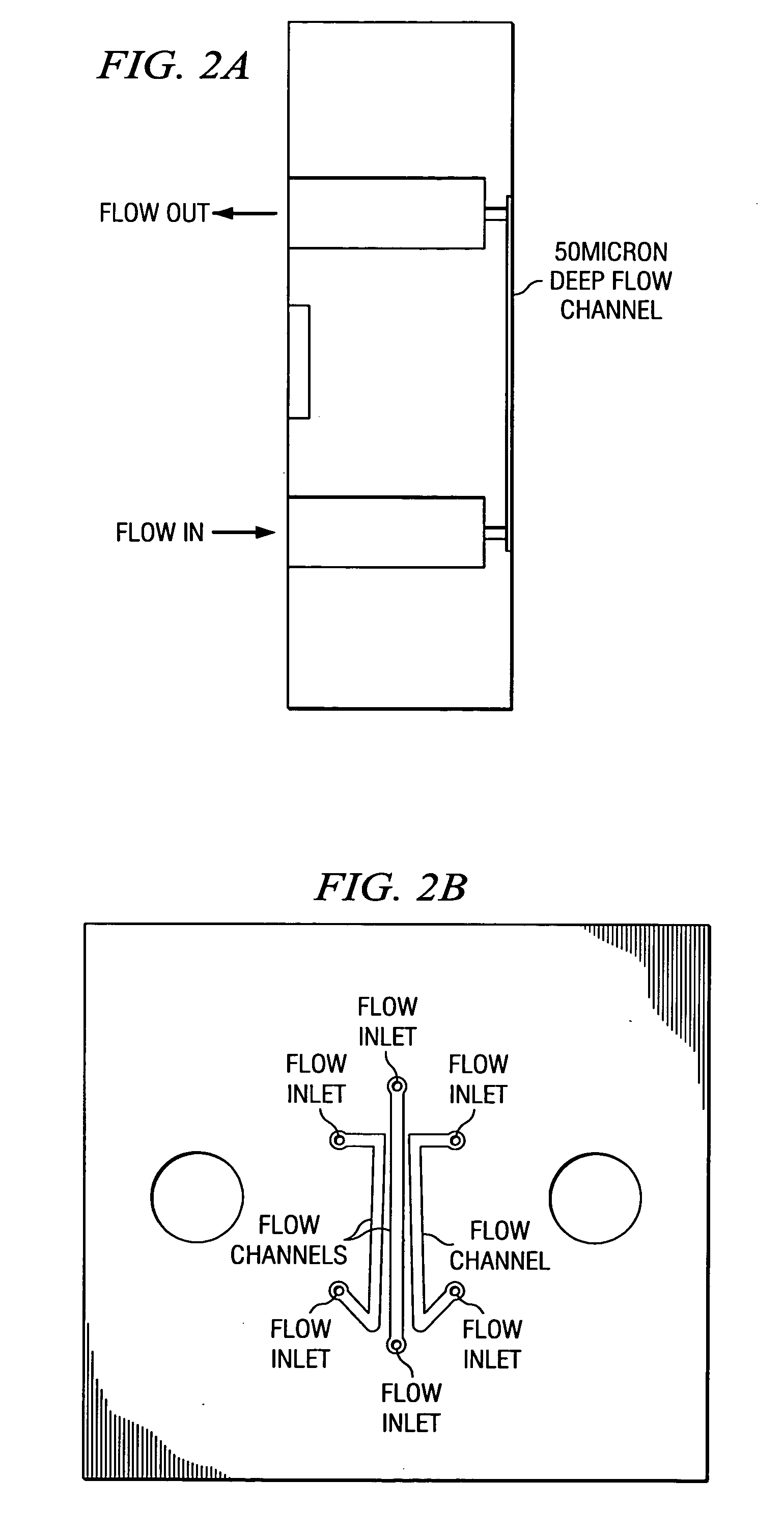Flow channel structure and method
a flow channel and flow channel technology, applied in the field of analytical chemical measurements, can solve the problems of difficult fluid connection with flow channel inputs, damage, and difficulty in achieving surface chemistry without damaging, and achieve the effect of maintaining a clean and reproducible biomoleculer interaction environmen
- Summary
- Abstract
- Description
- Claims
- Application Information
AI Technical Summary
Benefits of technology
Problems solved by technology
Method used
Image
Examples
Embodiment Construction
[0035] 1. Overview
[0036] Preferred embodiment microfluidic devices have a flow channel block with a hard, smooth surface including recesses that define microfluidic flow channels. The recessed block surface is clamped to the sensor surface of a surface plasmon resonance (SPR) device to form a microfluidic channeled sensor system. The SPR sensing surface would typically be glass with a deposited thin (e.g., 50 nm thick) gold coating and an analyte-binding layer (e.g., 100-500 nm thick) bonded to the gold. FIG. 1 illustrates in cross sectional elevation view a preferred embodiment sensor system with the flow channel block in the left-hand portion of the Figure and the SPR sensor in the center and right-hand portion; FIGS. 2a-2b are side elevation and plan views of a preferred embodiment flow channel block which has three parallel flow channels. FIG. 2c is an engineering drawing showing a perspective view of this flow channel block.
[0037] Since there is no adhesive with the clamped p...
PUM
| Property | Measurement | Unit |
|---|---|---|
| surface roughness | aaaaa | aaaaa |
| incident angles | aaaaa | aaaaa |
| flatness | aaaaa | aaaaa |
Abstract
Description
Claims
Application Information
 Login to View More
Login to View More - R&D
- Intellectual Property
- Life Sciences
- Materials
- Tech Scout
- Unparalleled Data Quality
- Higher Quality Content
- 60% Fewer Hallucinations
Browse by: Latest US Patents, China's latest patents, Technical Efficacy Thesaurus, Application Domain, Technology Topic, Popular Technical Reports.
© 2025 PatSnap. All rights reserved.Legal|Privacy policy|Modern Slavery Act Transparency Statement|Sitemap|About US| Contact US: help@patsnap.com



